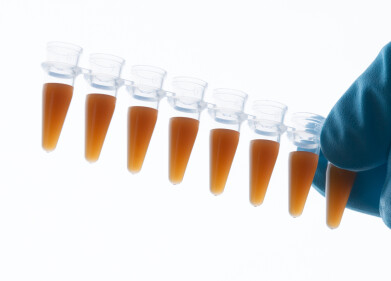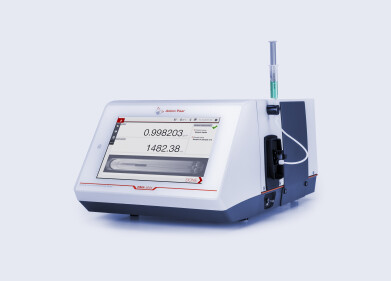Laboratory Products
Revolutionary Dosing Technique for Contact Angle Scientifically Validated
Mar 21 2016
With the Liquid Needle dosing technique, Krüss GmbH is using a new method of drop positioning for measuring static contact angle. The pressure-based method significantly accelerates the dosing process compared with classic needle dosing. Dosing units arranged in parallel produce two drops at the same time enabling measurements of the surface free energy to be carried out within one second. A current scientific study in the journal Colloid and Polymer Science verifies that contact angles are measured accurately in spite of this high speed.
During the study, contact angles were measured on 14 different materials with the new pressure dosing method and the classic needle dosing technique. With a wide range of hydrophobic and hydrophilic, rough and smooth as well as chemically pure and technical surfaces, the investigation covers all practical cases. The results of the scientifically reviewed publication show without exception a good accord between the contact angle results of the two dosing methods.
Alternatives to needle dosing have previously failed due to the region outside the contact area of the drop being pre-wetted as the dynamics were too high. This falsified the contact angle resulting in values which were too small. In contrast, with the Krüss Liquid Needle method, drops are formed in a controlled manner and with low dynamics with the help of a continuous jet. The jet is so thin compared with the final drop size that the contact area does not spread to any greater extent than with needle dosing.
Both techniques are basically distinguished by careful dosing. However, this is not always the case with classic needle dosing. The user can inadvertently increase the dynamics and thus falsify the value by an unsuitable choice of depositing speed or dosing distance. This is ruled out technically with the new dosing method. The Liquid Needle is also particularly beneficial with liquid-repellent samples. While smaller drops with needle dosing are difficult to deposit on such hard-to-wet materials, dosing with the Liquid Needle presents no difficulties.
Overall, the study shows that the Liquid Needle combines speed with high accuracy, reliably prevents unwanted pre-wetting, and furthermore enormously simplifies dosing on liquid-repellent samples. Krüss is using the new dosing technique in the Mobile Surface Analyzer – MSA and making it available for all stationary contact angle measuring instruments.
Digital Edition
International Labmate 49.6 - Sept 2024
September 2024
Chromatography Articles - HPLC gradient validation using non-invasive flowmeters Mass Spectrometry & Spectroscopy Articles - From R&D to QC, making NMR accessible for everyone: Putting NMR...
View all digital editions
Events
Oct 08 2024 Gothenburg, Sweden
Oct 09 2024 Birmingham, UK
Oct 09 2024 NEC, Birmingham, UK
Oct 15 2024 Milan, Italy
Oct 17 2024 Dhaka, Bangladesh










.jpg)







